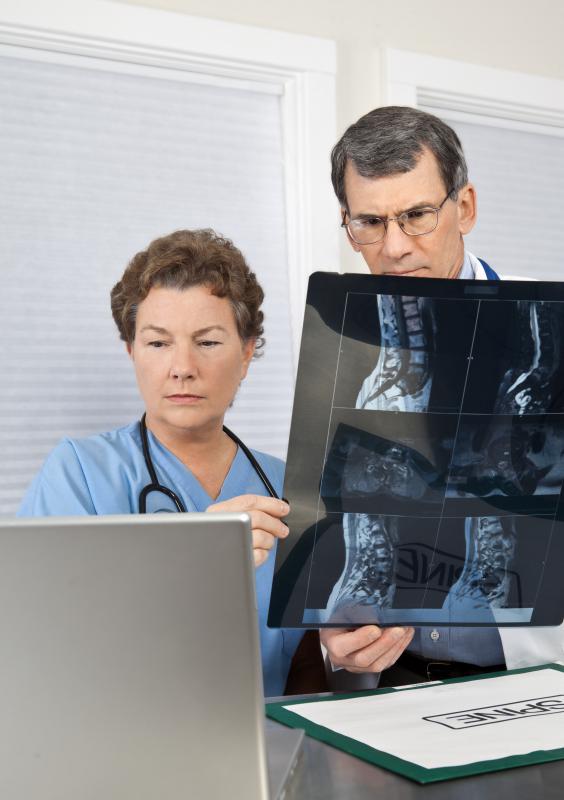At WiseGEEK, we're committed to delivering accurate, trustworthy information. Our expert-authored content is rigorously fact-checked and sourced from credible authorities. Discover how we uphold the highest standards in providing you with reliable knowledge.
What is Roundback?
The term roundback refers to a medical condition also known as kyphosis. A curve in the spine causes the back to round forward, making it look as if a person is slouching or has a hunchback. There are different causes of this condition, as well as types. Treatment options do exist and depend on the cause, type and severity of the condition, as well as the age of the afflicted person.
In general, roundback affects any one of any age, although it is rare to see it at birth. In children and adolescents, developmental problems can cause the condition to occur. Different types of roundback found within this age group are congenital kyphosis, postural kyphosis and Scheuermann’s kyphosis. In adults, causes of the condition include degenerative diseases and compression fractures due to osteoporosis. Some other causes include infection, injury and illness.

Early and mild cases of roundback sometimes do not produce signs or symptoms. When symptoms do occur, they might come in the form of fatigue, mild back pain and stiffness or tenderness in the spine. Physically, the afflicted person might exhibit a slouching posture or hunchback appearance. In severe cases, breathing difficulties can occur.
A physical examination is one way to diagnose roundback. During this test, the doctor might ask the patient to bend forward so that he can inspect the curve of the spine from the side. This is because in this bent position, the condition becomes more apparent. In addition, the doctor might also check for any changes in the nervous system. Changes in sensation, paralysis and weakness are signs of problems occurring in the nervous system due to roundback.

Other tests include magnetic resonance imaging (MRI) scans, pulmonary function tests and spinal x-rays. Unlike a physical examination, these tests diagnose or confirm specific problems. For example, an MRI helps to confirm an infection, tumor or problem with the nervous system. Pulmonary function tests help in studying any breathing difficulties. Spinal x-rays determine the specific type of roundback that is affecting the patient.
Complications, such as deformity and paralysis, can occur from roundback, but there are treatment options available. Exercise, as well as medications and physical therapy, can help relieve pain. Severe cases might require more aggressive forms of treatment such as a back brace or surgery. Usually, surgery is last in the line of treatment options as spinal surgery is both a complex and risky procedure.
AS FEATURED ON:
AS FEATURED ON:












Discuss this Article
Post your comments